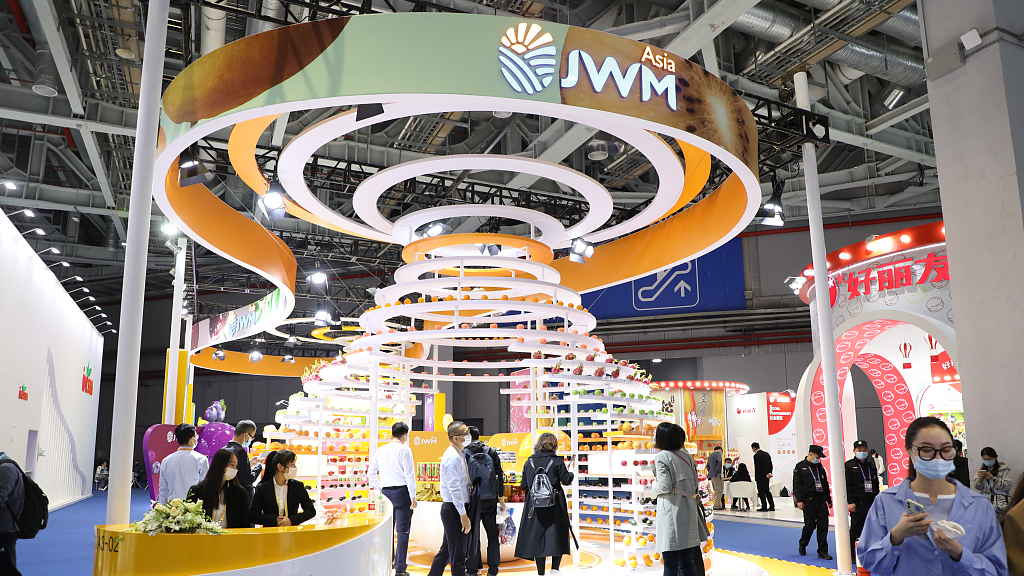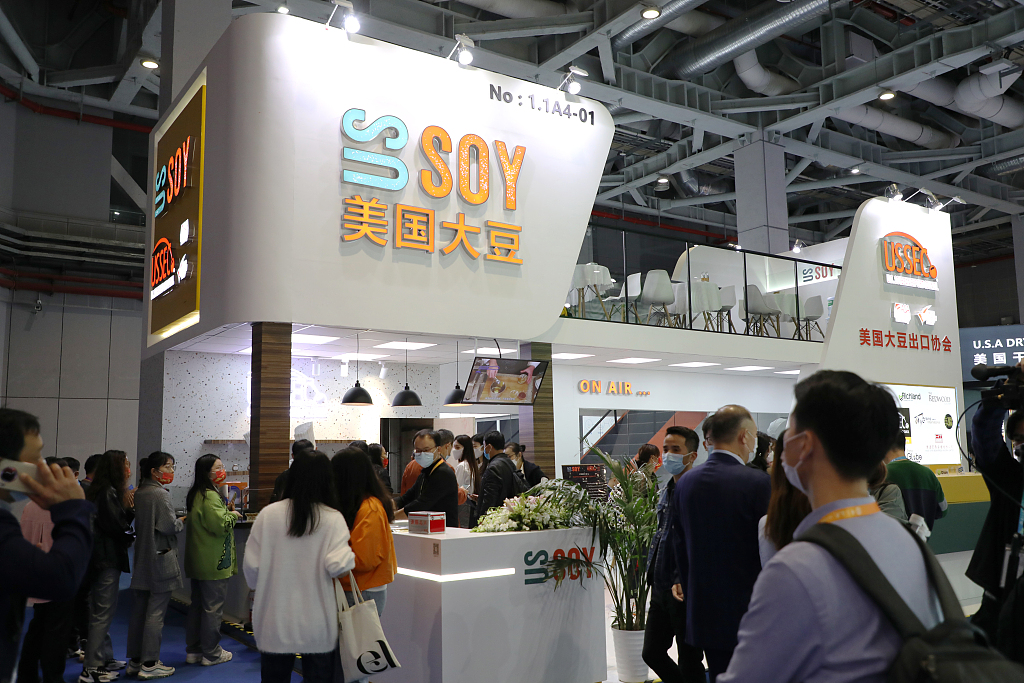
JWM Asia booth at the China International Import Expo (CIIE), Shanghai, November 6, 2021. /CFP
JWM Asia booth at the China International Import Expo (CIIE), Shanghai, November 6, 2021. /CFP
Editor's note: Freddie Reidy is a freelance writer based in London. He studied history and history of art at the University of Kent, Canterbury, specializing in Russian history and international politics. The article reflects the author's opinions and not necessarily those of CGTN.
Across 366,000 square meters and hosting exhibitors from 127 countries and regions, the 4th China International Import Expo (CIIE) opened its doors in Shanghai on November 4. While globally renowned as an export nation, the CIIE underscores the economic importance of China as an importer and the vital partnership it offers nations around the world.
The event plays host to exhibitors from a myriad of sectors, from automobiles to information technology, healthcare and the intelligent industry.
Another such highly significant sector is agriculture; China imported over $170 billion worth of agricultural goods in 2020. For many nations, China's role as a major importer has provided an economic lifeline during the global COVID-19 pandemic and an opportunity to diversify the economies of nations traditionally reliant on tourism and associated trade.
One such nation is Thailand, where, in 2019, tourism accounted for about 11 percent of the country's GDP. With Thailand only recently announcing a reopening of its borders to tourists, economic diversification became an essential economic lifeline. As such, a renewed focus on traditional sources of revenue, such as agricultural export, has proved vital for the nation.
Indeed, in the first three quarters of 2021, China's imports have risen by 22.6 percent, with agricultural exports representing the majority of this figure.
The CIIE also offers other agricultural exporters great opportunities as the Filipino Center for International Trade Expositions and Mission executive director Pauline Suaco-Juan said, "China is our top export market holding 27 percent of the Philippines' total exports. CIIE is a great opportunity to feature how Filipino products can meet the needs of the Chinese market and also explore other opportunities to further develop economic relations with China."
While these examples showcase the importance of the export market, such economic lifelines have come under an increasing strain throughout the pandemic. The global economy has hitherto become ever reliant on a last-minute supply network with a heavy dependence on shipping and air cargo as a means of export. The pandemic led to the grounding of swathes of air cargo capacity while consumer surges in need stretched the delicate balance to its limit. Another unforeseen global event the form of a blockage of the Suez Canal, which further hampered the traditional routes of trade.

American Soybean product booth at 4th the China International Import Expo (CIIE), in Shanghai, east China, November 6, 2021. /CFP
American Soybean product booth at 4th the China International Import Expo (CIIE), in Shanghai, east China, November 6, 2021. /CFP
These vulnerabilities to supply have necessitated a revaluation and an appreciation of the need for more stable trade routes. With this in mind, new proposed high-speed rail connections from Thailand and Laos to China, complementing the fledgling belt and road network, will secure the vital economic pathways for the future and give way to a raft of further export opportunities.
In addition to the supply chain risks comes the wider risk of climate change. As global delegates continue negotiations at the COP26 in Glasgow, the 2021 Global Risk Report from the World Economic Forum lists climate change as its number one risk. Thailand and the Philippines are among those to be worst affected.
To mitigate these risks, China is taking steps of increasing magnitude to prevent the exponential rise in global temperatures. Not only is Beijing committed to the goals of the Paris Climate Accord, but it has also committed to ending the development of all new coal-fired power stations abroad.
This drive forms part of a shift announced at the Belt and Road Initiative conference in October, where sustainable green initiatives will form a cornerstone of the BRI and also help meet China's carbon neutrality commitments by 2060. The commitments were further emphasized at the Chinese-led COP15 biodiversity summit in Kunming.
While agriculture may only represent one sector in the vast diversity of the CIIE, it serves as a vital microcosm. The material benefit of increasing exports to China is clear, as are the supply and climate change challenges. But what comes with these challenges is the opportunity to develop deeper cooperation, sustainable infrastructure, diversification of economies while harnessing technological innovation as an engine for future sustained growth.
(If you want to contribute and have specific expertise, please contact us at opinions@cgtn.com.)

